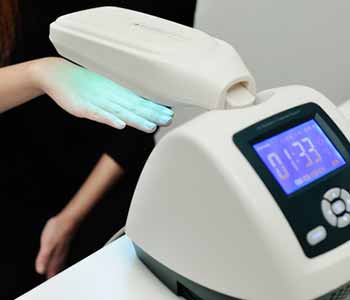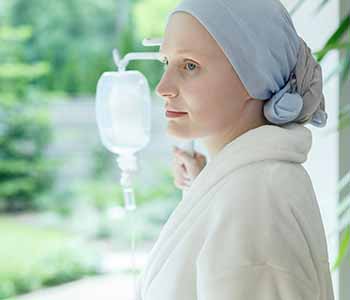Patients in Algonquin seek information on the costs and benefits of image-guided superficial radiation therapy for skin cancer
Posted by Dr. Vikram Khanna
What is skin cancer?
Skin cancer is the unrestrained growth of abnormal skin cells. While it can occur for several reasons, skin cancer is most commonly caused by overexposure to UV light from the sun or tanning beds. Genetics and age are also risk factors for skin cancer.The different types of skin cancer are: basal, squamous, and melanoma. The first two, basal and squamous, are the most common and are much less likely to spread. They typically occur on areas of the body that receive the most UV exposure such as the head and neck. While these cancers are typically not life threatening, it is important to undergo regular screenings to catch them early, as traditional treatment can be disfiguring.
How radiation works
Chances are, you’ve heard about radiation therapy for other types of cancers. Radiation is a very important tool for doctors trying to treat cancers because the radiation alters the DNA of a cancerous cell and its ability to multiply, ultimately leading to the death of the cell.How IGSRT therapy differs from traditional cancer radiation
IGSRT is a superficial, low-energy radiation that uses a precise beam to target the area just below the skin where the cancer cells are located. It is painless and highly effective at treating the targeted non-melanoma cancer cells while leaving the healthy tissue intact. IGSRT therapy is effective for non-melanoma skin cancers on the head and neck. In certain cases, it may also be used for skin cancers on the arms, back, stomach and legs.IGSRT therapy can also be used for patients with keloids. Keloids are raised scars that can appear after an injury or surgery. While keloids are non-malignant, they can be unsightly and sometimes painful. IGSRT therapy destroys the cells that formed the keloid to smooth out the skin. Multiple sessions may be required, depending on the size of the keloid.
Some of the benefits of IGSRT therapy include:

- High cure rate like MOHs surgery
- Quick treatments
- Painless
- No cutting
- No stitching
- Minimal scarring
- No anesthesia
- Faster healing
- No risk of post-surgical infections
- No reconstruction necessary
What to expect with IGSRT therapy for skin cancer
- IGSRT requires multiple sessions, depending on the size and location of the cancer.
- You will need to disclose any medications you are currently taking prior to IGSRT therapy.
- The actual procedure is similar to an X-ray. An applicator cone will be placed over the cancerous lesion and the radiation will be directed toward it.
- The actual treatment only takes about 90 seconds.
- The procedure is painless; however, redness of the skin and scabbing is normal in the weeks following therapy.
The cost of IGSRT therapy
 The cost of IGSRT therapy varies, based upon insurance coverage and the extent of the treatment required. We can verify copays and coverage prior to beginning treatment. We can also work with you on CareCredit financing if necessary.
The cost of IGSRT therapy varies, based upon insurance coverage and the extent of the treatment required. We can verify copays and coverage prior to beginning treatment. We can also work with you on CareCredit financing if necessary.
Why choose Dermatology Specialists of Illinois
Our team is experienced in the diagnosis and treatment of skin cancer. Our goal is to ensure that patients receive the most advanced skin cancer treatments available. If you are diagnosed with skin cancer, we will work with you individually on the treatment plan that is best for your unique situation. In addition to IGSRT therapy, we also offer more traditional treatments such as surgical excision, electrodessication and curettage, topical chemotherapy, and injectable chemotherapy.If you are searching for an alternative to skin cancer surgery in Algonquin, image-guided superficial radiation therapy may be the answer for you. If you would like to learn more about IGSRT therapy, call Dermatology Specialists of Illinois today to schedule an appointment.
Featured Articles
- Dermatologist in Algonquin, IL describes the benefits of blue light phototherapy
- Dermatologist in Algonquin, IL describes how to get rid of chapped lips
- Algonquin, IL dermatologist offers tips for dry skin relief during the winter months
- Patients in Algonquin ask, “Does Xtrac Laser therapy work for psoriasis?”
- Patients in Algonquin seek information on the costs and benefits of image-guided superficial radiation therapy for skin cancer
- What are the benefits of Xtrac laser treatment for patients in Algonquin, IL?
- Blue light therapy can be used in Algonquin, IL to effectively treat acne
- Non-invasive, image-guided superficial radiation therapy treats non-melanoma skin cancers in Algonquin, IL patients
- Patients in Algonquin get clearer skin with the help of Xtrac laser treatments





















